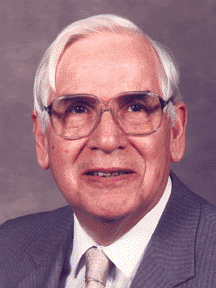 1910-2001
1910-2001
Wilbor Wilson, born in Fort Towson, youngest of 9 children, was raised on a livestock ranch by parents of Choctaw and Chickasaw descent. He was responsible for tending to the chickens on the ranch, initiating a life-long interest in poultry. He participated in 4-H and tended a flock of Golden Laced Wyandottes.
He received a B.S. at Oklahoma Agricultural and Mechanical College in 1932, an M.S. at Kansas State University in 1933, and a Ph.D. at Iowa State University in 1947. He worked at a General Mills research farm from 1935-1937 and was an assistant professor at South Dakota State College in Brookings (1937-1944). Wilbor met Thelma Torguson there and married her in 1938. The family moved to Iowa State where Wilbor was a research associate for 2 years. In 1946 he was appointed Assistant Professor, Department of Poultry Husbandry, U.C. Davis and Assistant Poultry Physiologist in the Experiment Station. He moved rapidly through the professorial ranks and served as Chairman of the Department from 1966-1969, during which time the name was changed to the Department of Avian Sciences.
Wilbor made many significant scientific contributions, including his work on controlled environmental housing for poultry, the introduction of Japanese quail as a laboratory subject, and research concerning photo periodism and biological rhythms as affecting poultry and Coturnix. He published more than 190 articles, including a cover article for Scientific American. Sabbaticals included working for the U.S.D.A. in Maryland (1954), the National Institute of Neurological Diseases and Blindness at the University of Washington at Pullman (1960), and the University of Hawaii (1970). His research led him all over the world including Thailand, Brazil, and Japan.
Wilbor was a member of the Poultry Science Association, serving as president in 1969-70. He was made a fellow of the American Association for the Advancement of Science in 1960 and a P.S.A. fellow in 1972. He served as president of the Davis branch of the American Association of Retired Persons, and helped build the Davis Lutheran Church.
After retiring in 1978, Wilbor continued to be active in University life. He taught a course on the Five Civilized Tribes, specializing in the Choctaw and Chickasaw tribes, for the Native American Studies Department.
